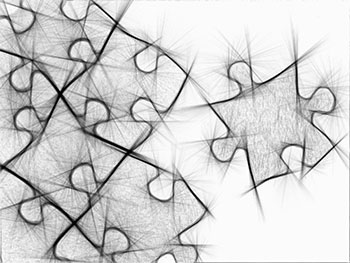"hardware manufacturing" entries

Robert Brunner on designing and building great products
The O’Reilly Hardware Podcast: The critical role of design in creating iconic products and brands.
Subscribe to the O’Reilly Hardware Podcast for insight and analysis about the Internet of Things and the worlds of hardware, software, and manufacturing.
Our expectations for industrial design have risen immeasurably in the last decade. Think of any piece of consumer electronics from 2005—a BlackBerry, for instance—and you’ll think of something that was encased in plastic painted silver to imitate metal, with a too-light heft and a rattle when shaken.
Now, nearly every successful piece of consumer hardware is the result of careful design and exquisite manufacturing. Apple deserves a great deal of credit for that shift by resetting the baseline with the iPhone in 2007, but new tools and processes have played an important role as well. Digital design has become easy and sophisticated, and contract manufacturers can do spectacular things with glass, aluminum, and semiconductors that were nearly impossible just a few years ago.
Our guest on this week’s episode of the O’Reilly Hardware Podcast is Robert Brunner, a founder of this new era of design. Brunner was director of industrial design at Apple from 1989 to 1996, overseeing the design of the PowerBook. He was the chief designer of Beats by Dr. Dre, the design-driven line of headphones that Apple acquired for $3 billion last year. And he’s the founder of Ammunition, which has worked with startups and large companies on a wide range of innovative consumer products.

The validated learning process for building a hardware startup
How to validate your idea, and get your community engaged.
Buy “The Hardware Startup: Building Your Product, Business, and Brand,” by Renee DiResta, Brady Forrest, and Ryan Vinyard. Note: this post is an excerpt from the book.
 Hardware founders should strive for hypothesis-driven development and validate their ideas with customers as early as possible. This can be done before or alongside the prototyping process, but it should absolutely be done before moving toward tooling.
Hardware founders should strive for hypothesis-driven development and validate their ideas with customers as early as possible. This can be done before or alongside the prototyping process, but it should absolutely be done before moving toward tooling.
Changing your design or switching technologies becomes much more expensive once you’ve moved beyond a prototype, so it’s important to get it right the first time.
The foundation of effective validated learning is conversation. You want to talk to — and, more importantly, listen to — several distinct groups of people who will be critical to your success as a company.
Your fellow hardwarians
The first group of helpers on the road to building your product are fellow hardware founders. Not everyone within the hardware community is a potential customer who will help you unearth the roots of a particular pain point. But within this community are the people who have done it before. They have extensive experience and can provide invaluable guidance for specific problems. They’ll help you reduce waste in the production process. Certain steps in the development process, such as finding a contract manufacturer, are often driven by word-of-mouth referrals. Networking with other founders building products in your space will give you a better chance of getting these things right the first time. Read more…
